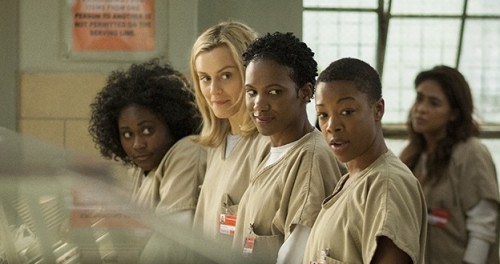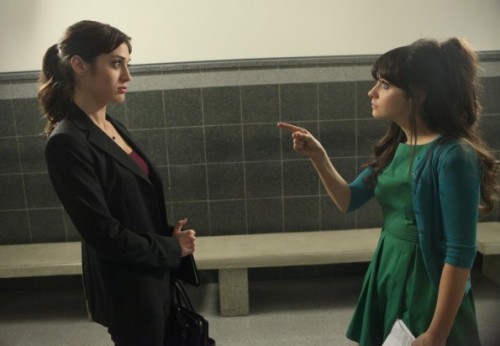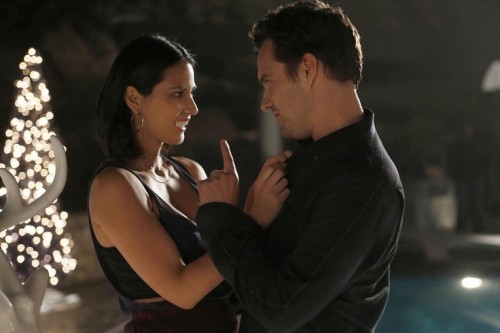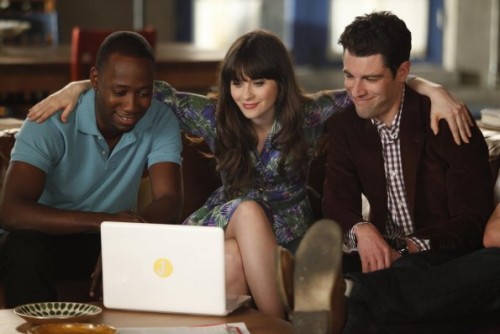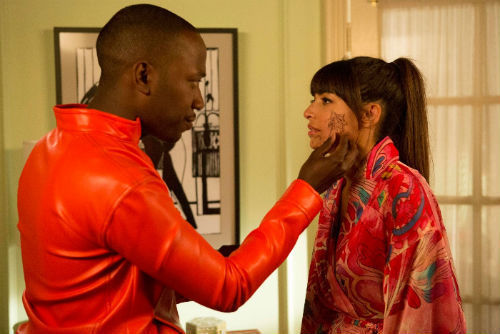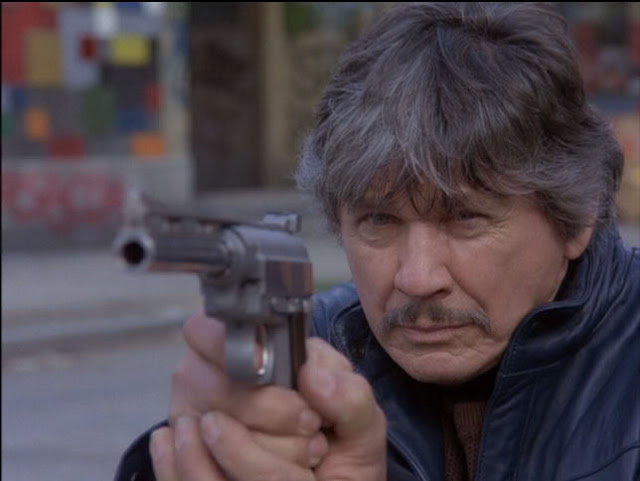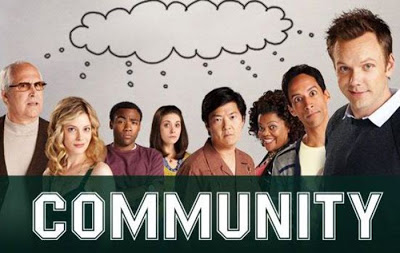
Written by Rachael Johnson.
I went on one of those Netflix benders recently and consumed the entire first season of Orange is the New Black in a little less than 24 hours. A little late to the party, you might say, but my timing, I believe, is perfect. I do not have long to wait for my next binge. The show returns in June. For those who have yet to sign up, Orange is the New Black tells the unusual, colorful tale of Piper Chapman (Taylor Schilling), a young, affluent, college-educated white woman incarcerated in a women’s prison in upstate New York. Piper is serving time for smuggling drug money a decade previously. The pretty, bourgeois life she has mapped out for herself–a loving fiancé, Larry (Jason Biggs), and business plans with her best friend–has been put on hold as her connection to her ex-girlfriend, and drug cartel member, Alex (Laura Prepon), has come back to haunt her. In fact, her past is made flesh in her new residence: the beautiful, exotic Alex is also an inmate. The show is based on Piper Kerman’s 2010 memoir, Orange is the New Black: My Year in a Women’s Prison, yet although it addresses serious issues such as addiction and lack of prisoner training and education, the tone of the show is not, for the most part, dark. Created by Jenji Kohan, Orange is the New Black can safely be categorized as a comedy-drama. It is funny, subversive, and teaming with interesting and eccentric characters.
The show has been praised for its inclusiveness and diversity. Its large, predominantly female, multi-racial cast of characters and embrace of a multiplicity of femininities is impressive for an American television show. Piper, it is true, is the central character but Season One incorporate the stories of a number of her fellow inmates. There are interesting, well-drawn and outrageous characters of many backgrounds. All the women’s lives are interesting.

Orange is the New Black should also be celebrated for its vivid, humane appreciation of the female body in all its forms. The show features a life-affirming variety of female bodies: thin, voluptuous, boyish, corpulent, athletic, ailing, aging, pregnant, transgender, desiring, desirable, and celibate. The body is, in fact, one of the central themes of the show. This is not surprising. Prison depersonalizes and dehumanizes human bodies. The female inmates in the show are constantly watched, frequently searched and sometimes molested and exploited. As it is clear from the very first episode, looking after your basic physical needs is not easy in prison when the authorities do not supply basic items. The problem often demands creative solutions. Orange is the New Black depicts and celebrates acts of free expression by the incarcerated women that serve to challenge the constraints that the prison regime puts on their bodies. These include exercise, yoga, running and dance. Prison also, of course, seeks to silence the human voice, but speech and song provide self-affirmation for the inmates. Expressing sexual desire is also a manifestation of freedom and autonomy. It is, however, read as subversive by the authorities. When Piper dances suggestively with Alex at a party, she is thrown in isolation. The decision is made by prison supervisor Sam Healy (Michael J. Harney), who shows a half-paternal, half-sexual interest in Piper. He has a near-pathological obsession with lesbians and initially sees the privileged, engaged Piper as respectable. His punishment is both misogynistic and homophobic.

Orange is the New Black’s appeal lies in watching the women express themselves freely. The show has a deeply human, celebratory appreciation of the women’s condition. The inmates fight darkness with laughter. In fact, the prison world of Orange is The New Black can be likened, strangely enough, to Mikhail Bakhtin’s understanding of the carnival in its celebration of the anti-hierarchical spirit, socially subversive and sacrilegious acts, sensuality, eccentricity and unconventional connections. In his reading of the carnivalesque literary world of French Renaissance writer, Francois Rabelais, Rabelais and His World, Bakhtin underlines that carnival “marked the suspension of all hierarchical rank, privileges, norms and prohibitions.” Laughter is also celebrated as an anti-establishment weapon and Bakhtin explains that “festive folk laughter presents an element of victory not only over supernatural awe, over the sacred, over death; it also means the defeat of power of the earthly kings, of the earthly upper classes, of all that oppresses and restricts.” He notes, however, that the laughter of the carnival is “universal” and “directed at all and everyone, including the carnival’s participants.” The carnival, furthermore, supports “marketplace” anti-official, profane, parodic and abusive language. Orange is the New Black also mocks power and faith while celebrating joyous, subversive laughter and inventive, parodic speech. Both laughter and speech provide the female inmates with vital, democratic means of expression.
Orange is the New Black also valorizes sensual pleasure, particularly female sexual desire. Like other ground-breaking US TV shows of the last decade, it is merrily anti-puritan. It also has a rare, carnivalesque, in-your-face frankness. This is illustrated by repeated shots of vagina selfie shots of a female inmate who has been taking them in the women’s toilets while pretending to talk with the devil. Equally true to the ethos of the carnival, Orange is the New Black embraces the profane. Female inmates have sex with each other in the prison chapel.
Although the women dedicate themselves to maintaining personal hygiene, looking after their hair, bodies, and general appearance, the show is not frightened of depictions and discussions of emissions from the body. There is a scatological interest in bodily functions in the show. In Season One, a male guard and female inmate pee intentionally in places other than the bathroom while a bloodied tampon is served up in a sandwich in the prison canteen. This focus on the lower regions of the body equally recalls Bakhtin’s concept of the “grotesque body.” In Rabelais and His World, Bakhtin explains, “In grotesque realism…the bodily element is deeply positive. It is presented not in a private, egotistic form, severed from other spheres of life, but as something universal, representing all the people.” The “lower stratum” should not only be celebrated; it has anti-authoritarian significance too. Bakhtin notes that the function of the medieval clown is to remind the powerful of the “lower stratum.” In Orange is the New Black, emissions from the body also assume an anti-establishment, socio-political importance.

It is, in fact, unsurprising that the upper-class heroine of the tale finds herself on the receiving end of bodily waste in this carnivalesque world. It is Piper who is served the used tampon. She insulted Red’s cooking, albeit unintentionally. Charismatic, red-haired “Red” (Kate Mulgrew) is the prison’s Russian chef and matriarch to many. She also punishes Piper by withholding food. The latter needs to pay for her upper-class conceit and adapt to their world. It is also Piper who is forced to watch an admirer, Suzanne (Uzo Aduba) pee on the floor, in front of her bed, in response to being slighted. More on the unconventional Suzanne later but Piper is, in a way, also being punished for her vanity in this outlandish, amusing incident. The representative of the upper class is, furthermore, being reminded of “the lower stratum.”
Piss and menstrual blood are, used, therefore, as socially subversive weapons in Orange is The New Black. This carnivalesque treatment of Piper is all the more potent, and amusing, in the light of her professed love of bath or shower time–associated with both cleanliness and sexual love–as well as her job making artisanal bath products. But they do not, actually, have cruel intent on a symbolic level. They are, instead, democratic: Piper must surrender her bourgeois ego, sterile, little world, and join the carnival. The parodic insults Piper endures are also, incidentally, amusing. As she herself memorably notes, “I have been teased, stalked, threatened and called Taylor Swift.”
Orange is the New Black also addresses age-old American racial divisions and tensions. We see inmates welcome “their own” and vote on racial lines in leadership contests. Yet although the women hang out in racially segregated groups, these lines are broken quite regularly. They are happily transgressed in the carnivalesque spaces the prisoners create for themselves. Movie night and leaving parties function as joyful, heterogeneous, egalitarian spaces where women of all races mix and subvert racial divisions.

Orange is the New Black, what’s more, celebrates unconventional, carnivalesque connections. A particularly interesting, and lovely, one is between Sophia (Laverne Cox) a young African-American trans-woman, in jail for credit card fraud, and Sister Ingalls (Beth Flower), a white, political activist nun in late middle age. The Sister exercises a pastoral role to some extent–and Sophia ultimately appreciates her warm, no-nonsense advice–but there is nothing patronizing or judgmental about her manner and intent. Both are intelligent, compassionate people and both laugh–wisely–at the madness of the world around them. They are, moreover, interesting, likeable people. Sophia is, in fact, arguably, the most attractive, well-rounded character in Orange is the New Black.
But the show has a great number of interesting female characters such as Miss Claudette Pelage (Michelle Hurst), Piper’s “roommate.” An older, Haitian woman, Miss Claudette is in jail for killing a man who was abusing one of the young maids who worked in her cleaning company, a service comprised of young, illegal immigrants. A certain mystique has built up around Miss Claudette. She keeps herself to herself and does not have visitors. Dedicated to order and neatness, she is sharp, unwelcoming woman but gradually warms to Piper. Her fate is a deeply sad one.

Orange is the New Black also incorporates another important carnivalesque trait, eccentricity. Which brings us back to Suzanne. Nicknamed “Crazy Eyes” by many of her fellow inmates, Suzanne is a little different. As evidenced by the peeing incident, she is also unpredictable. Her manic intensity is, however, coupled with an engaging openness and sincerity. The characterization of Suzanne should not be read as naturalistic. Her unbalanced state is not portrayed in a clinical fashion. She is a carnivalesque, excessive figure who transgresses norm and boundaries and we are encouraged to enjoy her “madness.” A young, gay Black woman, Suzanne, in her eccentricity, also arguably goes beyond race and sexuality. There is another outrageous, key character is the show: Tiffany or “Pennsatucky.” The makers’ portrayal of “Pennsatucky” could be seen as classist–she is a lank-haired, racially prejudiced, rabidly homophobic young white “Jesus Freak” with appalling teeth–but she is so completely over-the-top that she cannot be said to represent the average, working-class, white, born-again Christian. The show’s most unlikeable character is, also, in fact, quite complex and her back story is out of the ordinary. “Pennsatatucky,” furthermore, has an important political function in that she exposes literalist, narrow-minded interpretations of faith. Compare the young woman’s Christianity with that of Sister Ingalls.

Orange is the New Black sends up the prejudiced, powerful, and comfortable. It takes deft, funny swipes at heterosexist, patriarchal attitudes as well as white privilege and complacency. Piper’s snooty, bird-like mother embodies the latter. When her daughter observes that she is not better than anyone of her inmates, she proclaims: “You’re nothing like any of these women. Any jury worth its salt would have seen that…” Parody is another carnivalesque weapon used in the show to puncture establishment pretensions. In one scene, friends “Taystee” (Danielle Brooks) and Poussey (Samira Wiley), whose love for each other has not quite been articulated, vividly parody the speech of a bourgeois, heterosexual white couple. Corrupt, sexist and homophobic prison guards and supervisors are also amusingly derided in the show. George Mendez (Pablo Schreiber) is one such example. “Pornstache,” as he also known, smuggles drugs into prison and sexually exploits the inmates. The show’s portrayal of “Pornstache” serves to drain him of power. Although a sleazy, dangerous character, he is meant to mocked rather than feared.
Orange is The New Black’s back stories depict the struggles of the underclass. Addiction, homelessness, neglect, and sexual exploitation are among the social issues addressed. The back-story of the young addict Trisha (Madeline Brewer), marked by abuse, addiction, and prostitution is not an uncommon one, while Taystee’s fate speaks volumes about the lack of support prisoners face when they are released. Yet although the show deals with a number of important social issues, and contains naturalistic elements, its subversive, socio-political power lies in its vivid, carnivalesque interpretation of prison life. It contains heart-breaking incidents but it also honors endurance and joyous resistance. Celebrating individuality, personal expression, and sensual pleasures, Orange is the New Black ultimately humanizes women who have been dehumanized.
